
I know it’s been a while since I last wrote. It’s been, well, it’s been a semester–interesting, frustrating, at times apathetic, and at other times guilt-ridden. I am sure most of you know what I’m talking about. I thought I would start off the new year with trying to look at the positives, with hopes that I can help some people. We spend 2/3 of the first semester doing both in-person and asynchronous. Like other in-person art teachers, I had to figure out material procedures that worked within restrictions handed down from on high–no group work, no sharing, single-use if possible.
I run my TAB studio in a very self-serve type of environment. Unfortunately this year, that wasn’t feasible and I didn’t set up the studio as normal. ::sad face:: Fitting the expectations set out for me to work into an open studio was frustrating, but over the 3+ months I’ve had students in my room, I’ve been able to come up with strategies to make it work. I do have less than half the students I would have normally in my room, and my largest class was 12 (half my normal cap BUT it was a ceramics class, so that made things interesting.) Fewer students does make some things easier, I will admit, however, I did need to order a bunch of supplies that I wouldn’t normally order–more new brushes, lots of extra tools, extra sets of some media, single-use condiment containers, mesh bags. But in the grand scheme of things, it will help out in the future as there are some things I think I will continue using and doing after we return to a more “normal” school life.
Let’s do this…
Time Out area:
- I got this idea from another Texas TAB teacher, Lori Wallace. Not sure if it was her idea or not, but it’s a super awesome idea.
- It’s an area on my counter that I marked out as the time out area with some tape. (A student thought we needed a fun zone too, so there is that section next to it labeled as such.)
- Students put all used tools and materials there, so at the end of the day I can sanitize spray them.
Clean Cups and Dirty Cups:
- In a few different places, I have 2 sets of plastic cups–some labeled clean, and some labeled dirty.
- Cleaned tools (pencils, sharpies, skinny paint brushes, etc) are in “clean” cups.
- After student use, they put the tool in a dirty cup (this includes hand sharpener and erasers).
- I wipe down the hand tools with the provided sanitizing wipes at the end of the day, and then put them back into the clean cup.

Mesh Bags:
- I bought these mesh bags with a local grant, about 80 or so of them. I use them for many things: sets of acrylic brushes, sets of watercolor brushes, ceramic students individual tools, sets of brush markers.
- What makes them nice is that after the students use whatever is in them, they can put the bag in the time out area, and I can just spray the bag, turn it over, and spray the other side. The bag is mesh and plastic, so it gets the inside contents and allows for drying.
- This will be something that continues next year…using the bags for sets of things.
Materials List/Paint Color List:
- I made a list of all the different media I had to offer and a swatch of all the acrylic paint colors I have. I then laminated them and taped them down–one on each desk
- Students can tell me what medium they would like and I can get it for them.
- Students can tell me what paint colors they need, and I get those too.
- This lessens the amount of hands touching things–I wear gloves to get the different media.
- I don’t have to worry about sanitizing the paint bottles after each use because I am the only one touching the bottles.
- I put a piece of copy paper on each paint tray (cafeteria type trays), squirt on the selected colors, and give the students their paint. They throw out the paper and put the tray in the time out area.
Individual Student Tool Sets:
- This is mostly for my ceramic classes. This was costly, but there wasn’t really any other way. Tool kits were made; some sent home (and they come back when kids come back), and some stayed for in-person.
- Each student has their own cubby where they keep their tool bag. I repurposed my cubby since I didn’t set up the studio as normal.
- Each kit has a needle tool, a serrated metal scraper, a wide paint brush, a home-made sgrafitto tool (that each student made themselves), and a piece of canvas. I also bought a ton of wooden dowels (which I cut down to size to save money) and those longer, thicker paint stirrers. This allows for all to be able to use at the same time or for some to sit for a few days without being touched. These purchases will help out in the future with full classes.

Damp Boxes:
- I have enough shoe box size to give each of my upper students their own box–both for in person and remote.
- I walk around with large, under the bed size or sweater size ones, for my beginning students. I just go down the line, with gloves on, and give out each project. I do the reverse for clean-up.
Single Use Condiment Containers with Lids:
- I originally bought these to send home underglaze to my ceramic students.
- They come in handy for passing out regular ceramic glazes.
- I took all my glaze tiles and put them on a tray. Kids can point to the color, and I then mark the cup with the glaze number in a sharpie, and then return the lidded glaze-filled cup to them. They also know what number glaze they had so they can ask for more.
A Zillion Washcloths:
- Washcloths really are the best way to clean-up clay tables and paint spills. Those school paper towels suck.
- I bought over 100 of them from Walmart.
- Each one is “single” use. Student take one from the clean pile and go clean-up their table.
- They then put the used washcloth in the bucket by the sink after they are done with it.
- At the end of each week I was the washcloths for next week. I am lucky that I don’t have to take them home–I was given a key to the washers/dryer in the girls athletic area.
- It’s a little more work, but it is actually cleaner than when we would share the rags–so many less cloudy tables because kids don’t understand to rinse and ring the towels first before wiping the table–because more than likely, the person before didn’t rinse it.
Gloves:
- The district does supplies me with gloves and I go through 10 pairs a day maybe.
- Gloves do help to pass out supplies and whatnot to the students…and you will need to pass out a lot. You’ll feel like a waiter, but it is what it is. Lol
I think that is all. I know this is long, but I hope it is helpful to those of you that struggled first semester with having an open studio or those going back to in-person for the first time. Like I mentioned, I sometimes feel like a waiter, and it is tiring many days. My kids like to remind me when I don’t hand out table wipes at the end of the day, and they laugh when I yell that I’m about to take my gloves off so it’s last call for supplies for a while. Undoubtedly, I get someone that needs something like a minute later. ::shrug::
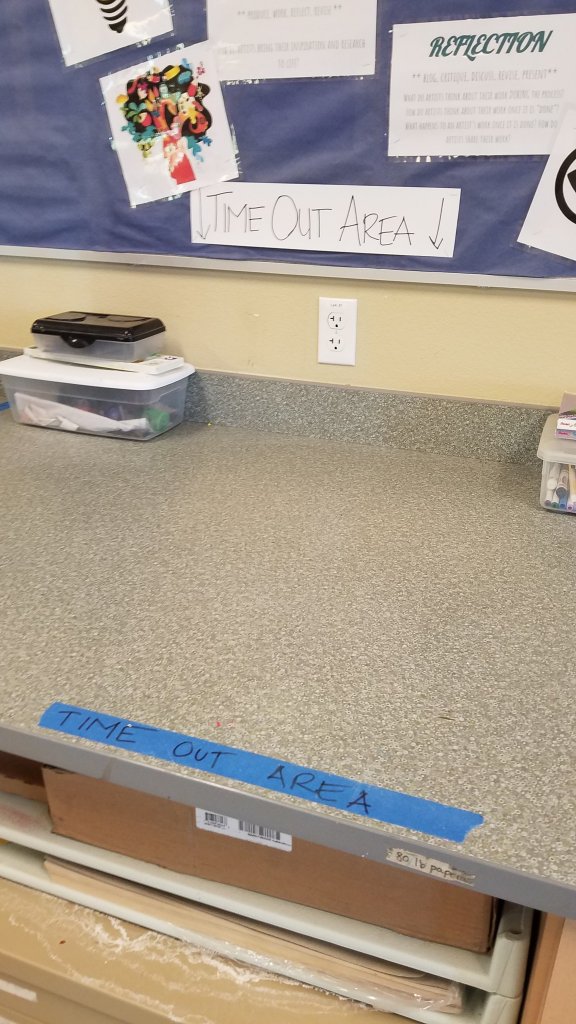
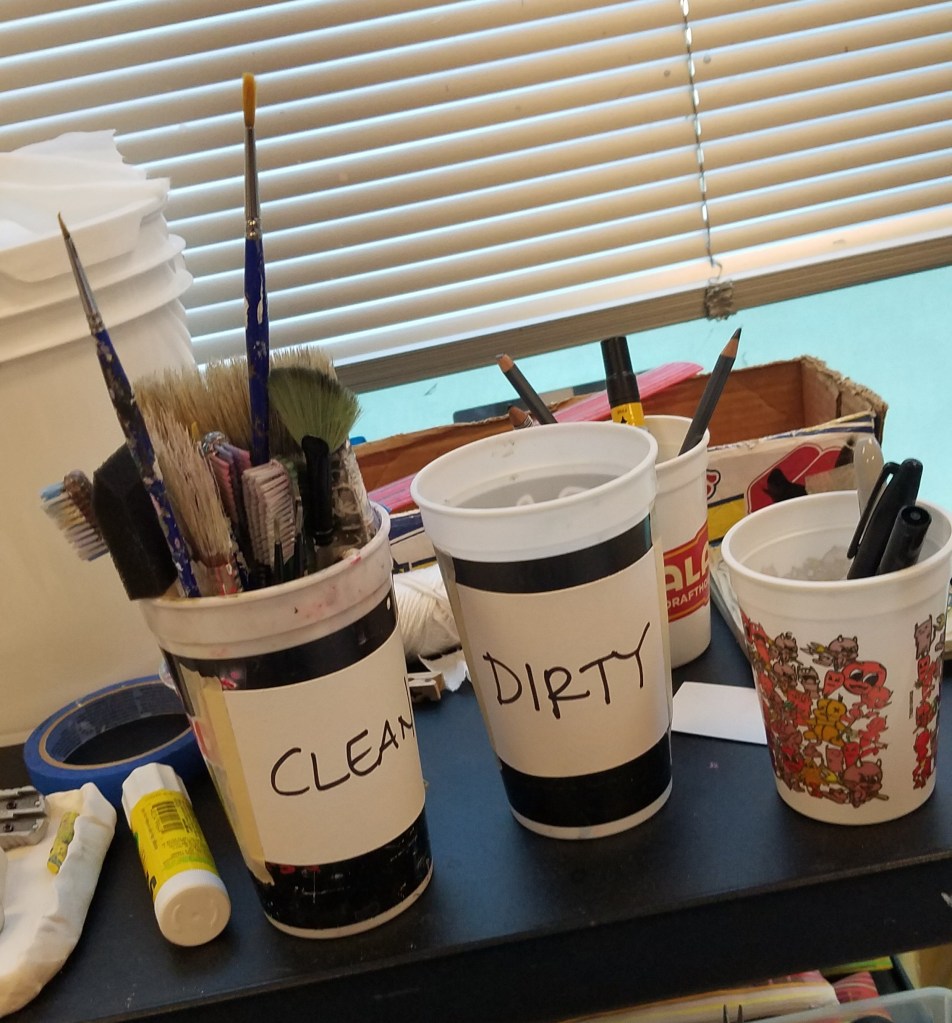

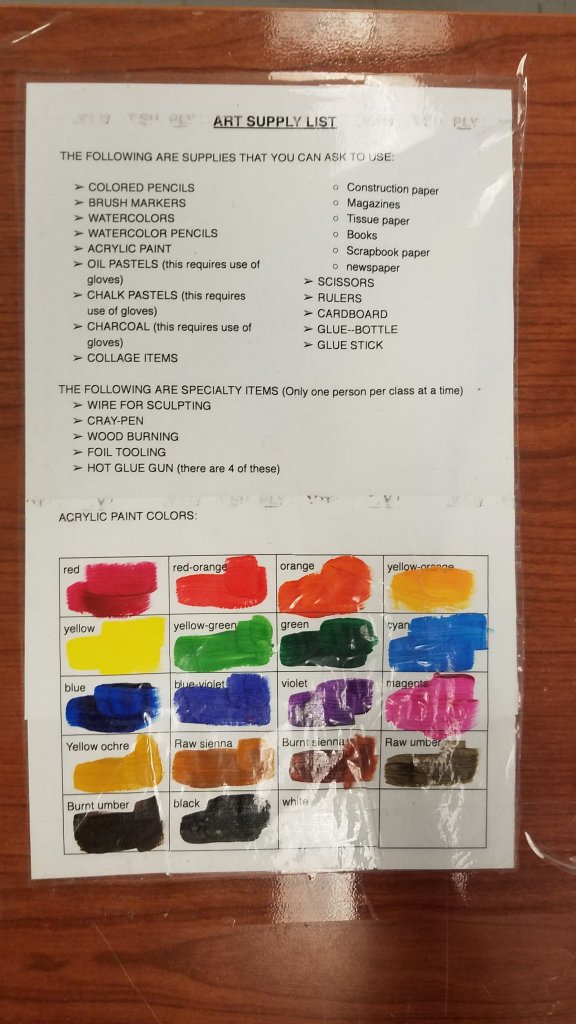

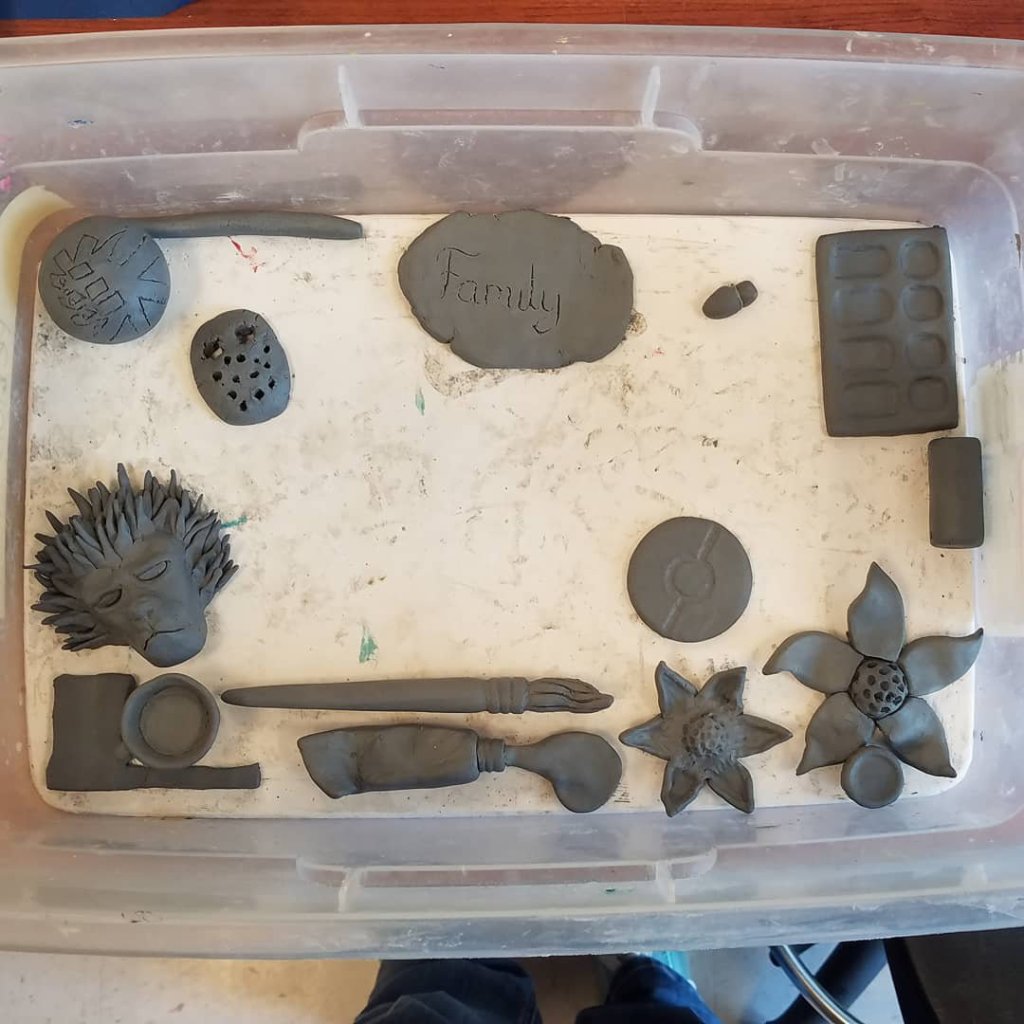








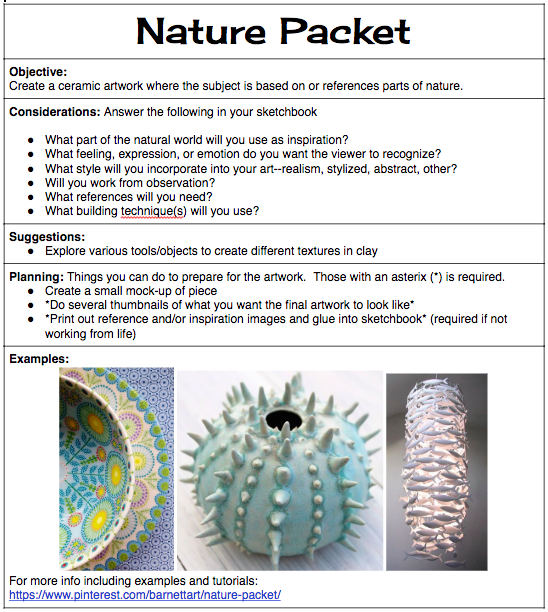


 honored me months ago by asking me to help out with this year’s mini-conference, by heading up the secondary portion of the conference. This year was our second event. At our first meet-up, there were about 30 of us tops in this small conference room in a hotel in Waco, TX. Ginger Tapia set the whole thing up and it was wonderful. It was there that an event was born. This year, TAB Lab was definitely the place to be, as we more than doubled the attendance with 67 teachers. And, I am happy to say that the secondary peeps went from about 7 or 8 to almost 20. It’s a good time to be a Tx TAB teacher.
honored me months ago by asking me to help out with this year’s mini-conference, by heading up the secondary portion of the conference. This year was our second event. At our first meet-up, there were about 30 of us tops in this small conference room in a hotel in Waco, TX. Ginger Tapia set the whole thing up and it was wonderful. It was there that an event was born. This year, TAB Lab was definitely the place to be, as we more than doubled the attendance with 67 teachers. And, I am happy to say that the secondary peeps went from about 7 or 8 to almost 20. It’s a good time to be a Tx TAB teacher.
















 his presentation, he told us of his journey–his life journey–from the train tracks by where he grew up to his current job as a high school TAB teacher in Indiana. It was interesting to me to hear how and when he met people I know (or know of), like Clark Fralick, Diane Jacquith, Kathy, NanHathaway, and John Crowe. My biggest take away from Clyde that morning was the rhizome. He likened things to it and called us rhizomatic. (
his presentation, he told us of his journey–his life journey–from the train tracks by where he grew up to his current job as a high school TAB teacher in Indiana. It was interesting to me to hear how and when he met people I know (or know of), like Clark Fralick, Diane Jacquith, Kathy, NanHathaway, and John Crowe. My biggest take away from Clyde that morning was the rhizome. He likened things to it and called us rhizomatic. (








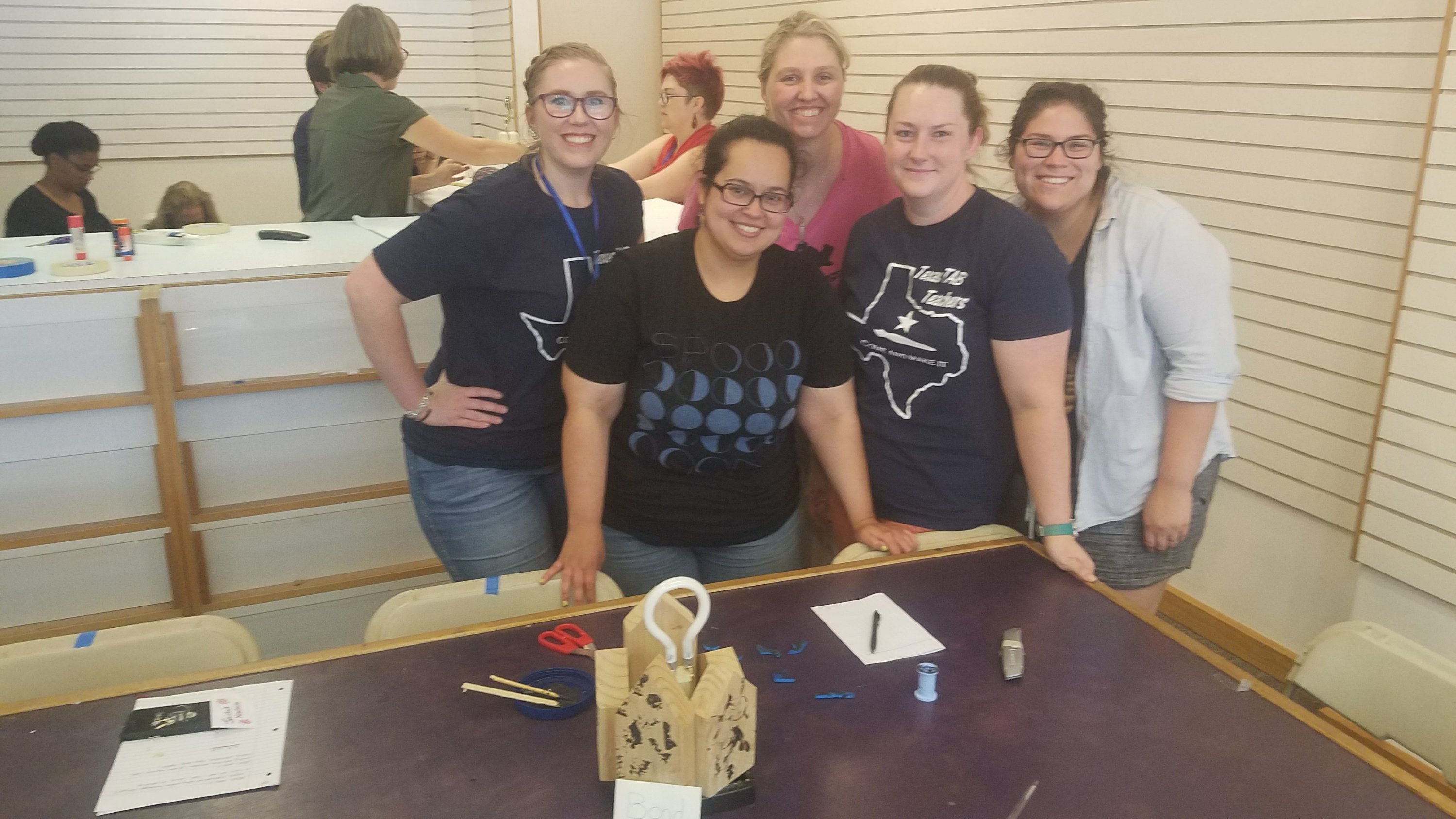
























 foundation called the Taylor Educational Enrichment Foundation (TEE) that offers thousands of dollars in grants annually. I finally got the courage to write a grant proposal for a raku kiln kit. When the day finallyarrived when we would find out who would be awarded, I’ll admit, I was nervous. I heard the band and the cheerleaders coming down the hall. I kept hoping they were coming to me and not going to walk on by. My principal ducked his head into my office and told me to come out into the hallway. I was so excited. I was dancing around my classroom. I have since ordered and received the kit and I can’t wait to set it up and teach my students how to raku this fall.
foundation called the Taylor Educational Enrichment Foundation (TEE) that offers thousands of dollars in grants annually. I finally got the courage to write a grant proposal for a raku kiln kit. When the day finallyarrived when we would find out who would be awarded, I’ll admit, I was nervous. I heard the band and the cheerleaders coming down the hall. I kept hoping they were coming to me and not going to walk on by. My principal ducked his head into my office and told me to come out into the hallway. I was so excited. I was dancing around my classroom. I have since ordered and received the kit and I can’t wait to set it up and teach my students how to raku this fall.











































 the Art of Education, Blog of the Year, Rising Start category. I didn’t win, but I think it is pretty cool that I made the list. I even got a nifty badge to display on the blog. Oh yeah! I write my blog with the hopes of not only documenting my journey, but also of helping another art teacher by sharing with I have learned along the way.
the Art of Education, Blog of the Year, Rising Start category. I didn’t win, but I think it is pretty cool that I made the list. I even got a nifty badge to display on the blog. Oh yeah! I write my blog with the hopes of not only documenting my journey, but also of helping another art teacher by sharing with I have learned along the way.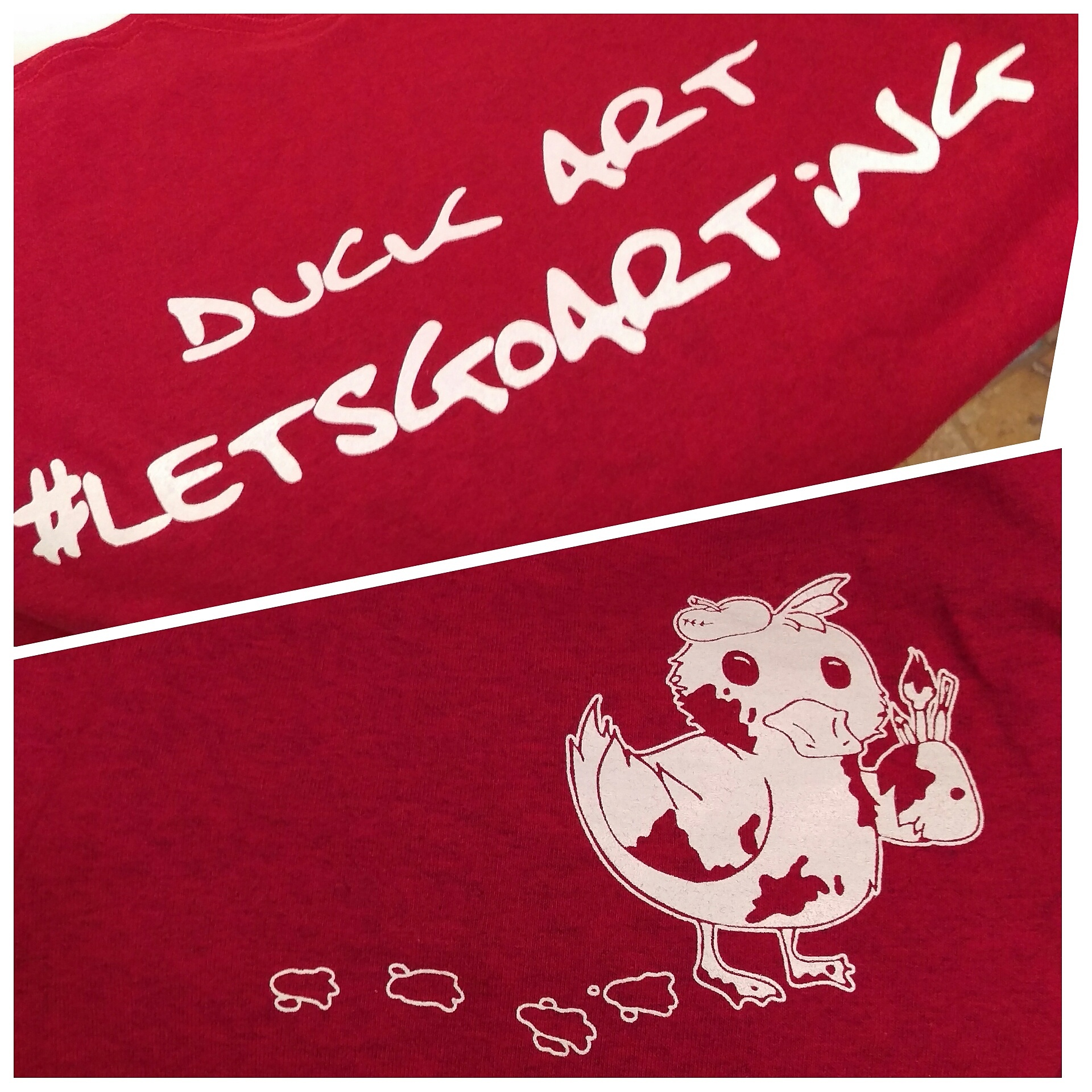 year I took over art club. I can’t remember the exact reason why he was willing to give it up, but he did, and finally it was mine. When we started, the club had no money (in fact the account had been closed due to inactivity), and they hadn’t done anything in years. I advertised the club. We met every Friday morning during tutorials. We elected a president, a vice-president, a secretary, and a treasurer. We sold popcorn, made Duck Art t-shirts and sold them, and even held a painting party. Was it the best art club? No. Did we do a whole lot? No. But we did paint a mural in our computer lab, and I am glad to say that we did have a few hundred dollars in the art club account by the end of the year. Furthermore, we still had members returning to meetings at the end of the year. So, I call it a win! Small steps people! I am so proud of the kids. Next year will be even better. I know it.
year I took over art club. I can’t remember the exact reason why he was willing to give it up, but he did, and finally it was mine. When we started, the club had no money (in fact the account had been closed due to inactivity), and they hadn’t done anything in years. I advertised the club. We met every Friday morning during tutorials. We elected a president, a vice-president, a secretary, and a treasurer. We sold popcorn, made Duck Art t-shirts and sold them, and even held a painting party. Was it the best art club? No. Did we do a whole lot? No. But we did paint a mural in our computer lab, and I am glad to say that we did have a few hundred dollars in the art club account by the end of the year. Furthermore, we still had members returning to meetings at the end of the year. So, I call it a win! Small steps people! I am so proud of the kids. Next year will be even better. I know it.


